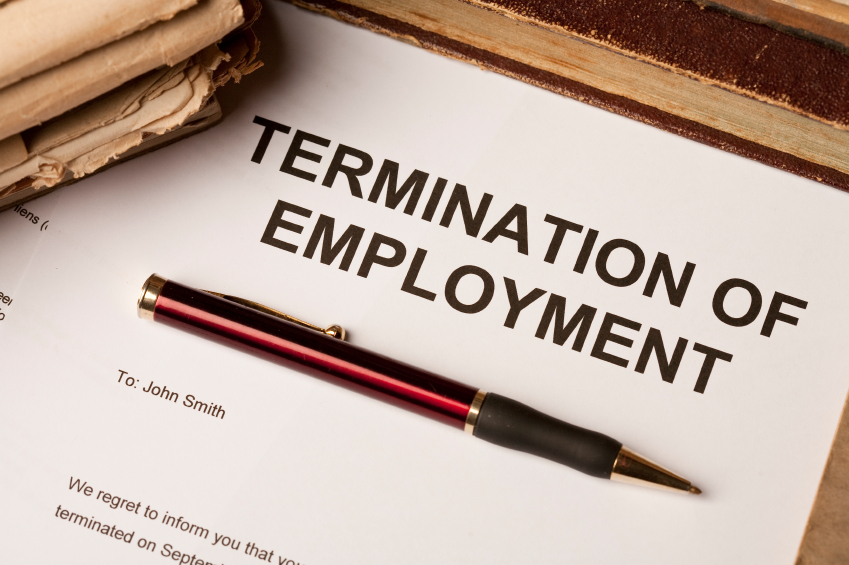
People usually ask
- Can you get fired for taking a leave of absence?
- What is termination while on unpaid leave?
- What is a forced leave of absence from work?
- Does leave of absence mean fired?
- Can I be fired while on leave of absence?
- What to do when you get fired?
- Can an employee be terminated while on medical leave?
- Does taking off the schedule mean being fired?
There are many reasons why an employee may need to take a leave of absence and there are many regulations that govern which types of absences are legal the law may prohibit an employer from terminating an employee for taking a leave of absence.
- Have you ever wondered what would happen if you became very ill suddenly and couldn’t go to work?
- What if your child or spouse became ill or he or was severely injured in an accident; would you have to take off work for the duration of their recovery?
- Suppose your doctor told you that you needed surgery as soon as possible.
- Perhaps one of your parents was in a recent accident, would your boss give you time off to care for them?
- What if your husband or wife was injured while on active duty in the armed forces, could you get time off to help him or her?
- What if you were temporarily disabled but could come back to work, does your boss need to accommodate you?
When an employee needs to take time off from work for certain reasons, it leaves the employee vulnerable to possible violations of their employee rights by their employer. There are laws in California that regulate employee leaves and how employers must respond to an employee requesting and/or taking a leave. Not all employers follow these laws nor do they implement them into their policies. This is where issues arise for the employee which may lead to the need for an Employment Lawyer. An Employment Attorney is a type of attorney who has experience in employment law on the employee side. This means the Employment Lawyer represents employees against their employers in particular leave of absence cases.
In this article, you’ll learn 4 things to know about Leaves of Absence and Wrongful Termination:
- Termination? Wrongful? Wrongful termination?
- Failure to comply with an accommodation request
- Time is relevant
- Communication is key
Let’s start at the top.
-
Termination? Wrongful? Wrongful termination?
An employee may run into issues at work once they request a leave, take a leave, or return from leave. When and if this occurs, certain employee rights may be violated and legal action may need to be taken.
The word “terminated” in employment law is just a fancy word for being canned, fired, or getting sacked. It is a word usually used to characterize how an employee was taken out of their employment as opposed to quitting, being let go, or a position being eliminated altogether. Termination is usually the result of an employee not conducting themselves in a professional manner such as being late or not producing a satisfactory work product.
Where does the “wrongful” come into play? Every state in America has its own laws regarding employment. In California, all employees are considered “at-will” employees. This means that all employees can be fired from their position for any reason or even for no reason at all except if it is for an illegal reason. Employers can decide at their own will to get rid of an employee when it suits them as long as they do not decide to do so because of the particular employee’s race, age, gender, sexual orientation, disability, medical condition, or if an employee makes a complaint concerning illegal/unlawful activity being exercised at the workplace. If an employer decides to terminate an employee based on one of those mentioned reasons, that may be considered a wrongful reason.
If an employee is terminated but the employee believes it is because they requested a leave, took a leave, or returned from leave, he or she may be a victim of wrongful termination.
If an employee is terminated but it is based on what the law considers a wrongful reason, this may be identified as “wrongful termination”. It is wrongful because it is based on an illegal reason. If an employee believes that he or she was wrongfully terminated because they or were fired for an illegal reason, then he or she should contact a wrongful termination attorney in their area.
-
Failure to comply with an accommodation request
Sometimes an employee may be cleared to work after taking a medical leave but only under certain conditions and/or restrictions. If an employee returns to work after taking an approved leave, they may ask for certain accommodations from their employer which their employer needs to comply with as long as the request(s) are/is reasonable. For example, an employee may request to work during certain hours or perhaps shorter shifts. If an employer fails to meet an employee’s reasonable request(s), the employee may have a case against their employer for failing to comply with their disability needs.
-
Time is relevant
How much time can an employee take off for a leave of absence? Depending on the circumstances, technically an employee is permitted to take up to 12 weeks for a recognized leave of absence. There are other factors involved in deciphering how much time an employee is entitled to, but it is a determination that usually a discrimination lawyer would be able to make.
-
Communication is key
If an employee needs to take a leave, keeping open communication with their employer is key. An employee should keep their employer informed of when he or they will need to take a leave, how long he or she expects to be out of work, and should their circumstances change, they should inform their employer as soon as possible. Normally during this time, an employee is on unpaid leave unless their employment contract says otherwise. Where an employee would need more time in addition to the 12 weeks, he or she may contact their employer and inform them of this need in the form of an accommodation request.
This request would likely need to include a doctor’s recommendation for the additional time off. Keep in mind however that after the original 12 weeks is up, there are certain laws that do not obligate the employer to restore the employee’s same position back to him or her upon their return.
In conclusion, disability leave and wrongful termination are complex areas of the law, which is why it would be useful to contact an Employment Lawyer. An Employment Lawyer who offers a free consultation with no up-front costs is the best kind of legal professional to contact. Each employment case is unique in its circumstances and facts, therefore an Employment Lawyer would be useful in the sense that they could tell a particular employee whether or not they have a case worth pursuing.
What was the origin of FMLA?
In the 20th century, the United States enacted labor laws. This was one of the first efforts to protect the inherent human rights of workers. The workplace was not regulated for much of the country’s history. Children and adults worked 70 hours a week in factories far from home, often with little to no rest breaks and no days off. Many children and women took these jobs to support their families, even though they were not allowed to ask for better conditions. Vernon reports that in the pre-trust-bust society, large corporations and their owners were among the most powerful entities in a country with unemployment rates up to twice that today. These positions were filled by middle-class workers who were careful not to be squished or outdone by larger, more powerful people. The labor reform era saw workplace safety and the mandating of the working age.
These are the fundamental statutes we now consider essential. These changes led to the Family and Medical Leave Act (FMLA) of 1993, which provided federal protections for qualifying individuals’ job security. This law allows new parents to take several weeks off work to care for their babies, or cancer patients to take time off to get treatment without being fired immediately.
FMLA has an unintentional benefit
While the immediate benefits of FMLA are evident, there are also wider-reaching and institutional-level benefits. While it was probably an unintentional benefit the formalization of father and mother’s rights to take off work after having children has been one the most significant advances in gender equality through contemporary legislation. Women were traditionally expected to stay home and care for their children, while men had to work to support the household. Employers could fire new mothers for taking leave after childbirth. This would eventually force them to return to work soon afterward. The new law mandated leave for medical and family issues. This allowed women to have a successful career while still maintaining their family life.
You’re likely to have seen shows such as Mad Men that highlight the stark difference in unequal treatment between men and women at work in 20th-century America. This may seem exaggerated to make a great show. However, many resources describe the typical role of women who serve only as assistants. Women were often in low-level jobs, such as nurses or administrative assistants. This made them easy to replace. It takes many years to climb the ladder, as with all jobs. You will always have to start over from the bottom if you stop mid-way up the ladder. The same applies to an entry-level job. New mothers don’t have to jump off the ladder to take leaves of absence. They can stop mid-climb to rest and then continue on their way to a higher-level job. It is implicitly discriminatory to terminate an employee who takes leave after childbirth.
This forces women to stay at home, have no family or force them to accept the fact that they may not be able to come to terms with their pregnancy through medical intervention. This behavior is inherently unethical and contributes to patriarchal workplace environments that are still prevalent today but have advanced in many dimensions since FMLA.
FMLA created a healthier environment
Companies that fire employees or deny them leave to address qualifying family or medical problems can now issue leave violations. This has had a profound impact on the workforce’s dynamic. People have been able to live in a more balanced environment, which has allowed them to continue their personal lives and diversify the workplace that was once dominated by one gender. Women’s equality has been accelerated by the protection of women’s rights to leave the workplace to have children. Maintaining a legitimate occupation is crucial to making the necessary changes at the institutional level that will allow women to bring their unique ideas and drive away from male dominance. This has helped to de-stigmatize single parenting, which was impossible before the protections concerning leaves of absence. Single parenting is now an integral component of protecting women without a father figure, women with spouses currently serving, and women who recently lost loved ones in combat.
Workers have the right to a medical leave of absence under the law
Our country wouldn’t be able to recognize the workplace it has today if it didn’t enact employment laws protecting one’s right to leave of absence. There would be no office space for young men and only a rotating number of women in their 20s. Due to the increasing implications of medical issues as our age, there would be fewer older men and fewer women in leadership positions due to the previous hiring-pregnancy cycles. Because of the inequalities among employees of different genders, our workplaces would feel less secure. Individuals being able to take time off does more than just benefit the individual affected. It benefits everyone in the workplace. It assures employees that their company and country care about them. It also reassures them that they are valued and are not disposable.
They are motivated to be their best and reminded that their coworkers and the administration are also their families. FMLA was created to protect workers’ rights but it has also done much more. It has changed the entire social stratification in our country, dispersed economic opportunities for women, and made work more enjoyable.
| |





Thanks for the sensible critique. Me & my neighbor were just preparing to do some research on this. We got a grab a book from our area library but I think I learned more clear from this post. I’m very glad to see such fantastic information being shared freely out there.
Good luck on your research!
Excellent blog here!
You are welcome Melvin,
It’s interesting to know that there are instances of employees being wrongfully terminated while on medical leave. I’m interested in looking for an employee right lawyer soon because I might have some complications with maternity leave. My boss wants me to be able to return early despite us not agree on that beforehand.
Please contact our office for free consultation
Toll Free: (800) 738-3353
Leave of absence is a very important subject in the workplace,
California permits qualified employees to take a leave of absence for the following reasons:
– Maternity leave
– Pregnancy disability
– Your own serious health condition
– Disability leave
– A child, parent, or other family member’s serious health condition
– Military service
– Jury duty
– Witness testimony
– Volunteer firefighter/reserve police officer/emergency rescue personnel service
– Alcohol and drug rehabilitation
– Voting
– Activities attributable to being a victim of domestic violence
– Activities attributable to being a crime victim
– Organ and bone marrow donation